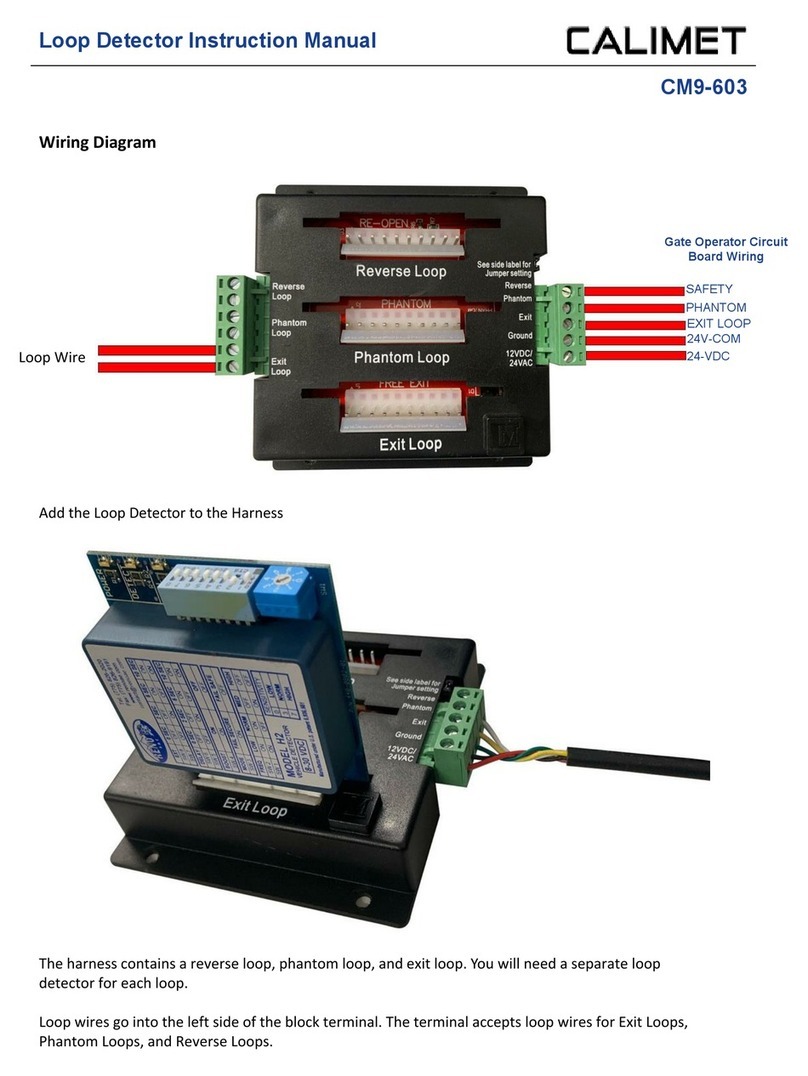
Size of Loop - We recommend the standard 4ft x 8ft that detects most vehicles, but you
may use a different size.
Saw Cut Depth - Cut 1.5" inches below the roadway using a circular saw.
Shape of Loop - The loop is typically cut in a rectangle with 45° angled corners that
eliminates the sharp edges that can eventually cut through wire insulation. Cut an exit slot
with NO sharp angles for the wires where they leave the loop saw cut.
Type of Loop Wire - Typically 18 AWG, stranded, tinned copper, insulated wire is used,
but you can also use 16 AWG. Cross Linked Polyethylene (XLPE) insulated wire is used
with cold sealant. Polyvinyl Chloride (PVC) insulate (TFFN, THHN, THWN) should be used
only with hot sealant. You will need at least 100 ft of loop wire for a standard 4x8' loop.
Backer Rods - The loop wires can be held securely in the bottom of the cut space using a
plastic foam called "Backer Rods". This prevents the loop wires from becoming loose in
the cut and cause false calls due to vibrations or movement. The recommended method
of holding the loop wire in the cut space is to use a series of 1 inch long pieces of backer
road spaced approximately 1 foot apart along the entire length of the saw cut exit and
exit slot. Make certain to press the backer rod tightly into the slot.
Sealant - Use sealant to close the sawcut loop once the loop wire has been installed
underground. Use cold sealant if your loop wire is XLPE, and hot sealant if your loop wire
is PVC.
Installing the Loop Wire Underground
Saw Cut Loops - Loops can be saw cut into concrete or asphalt using a circular saw.
They can be placed under brick pavers or be embedded in a poured concrete road
surface.






















